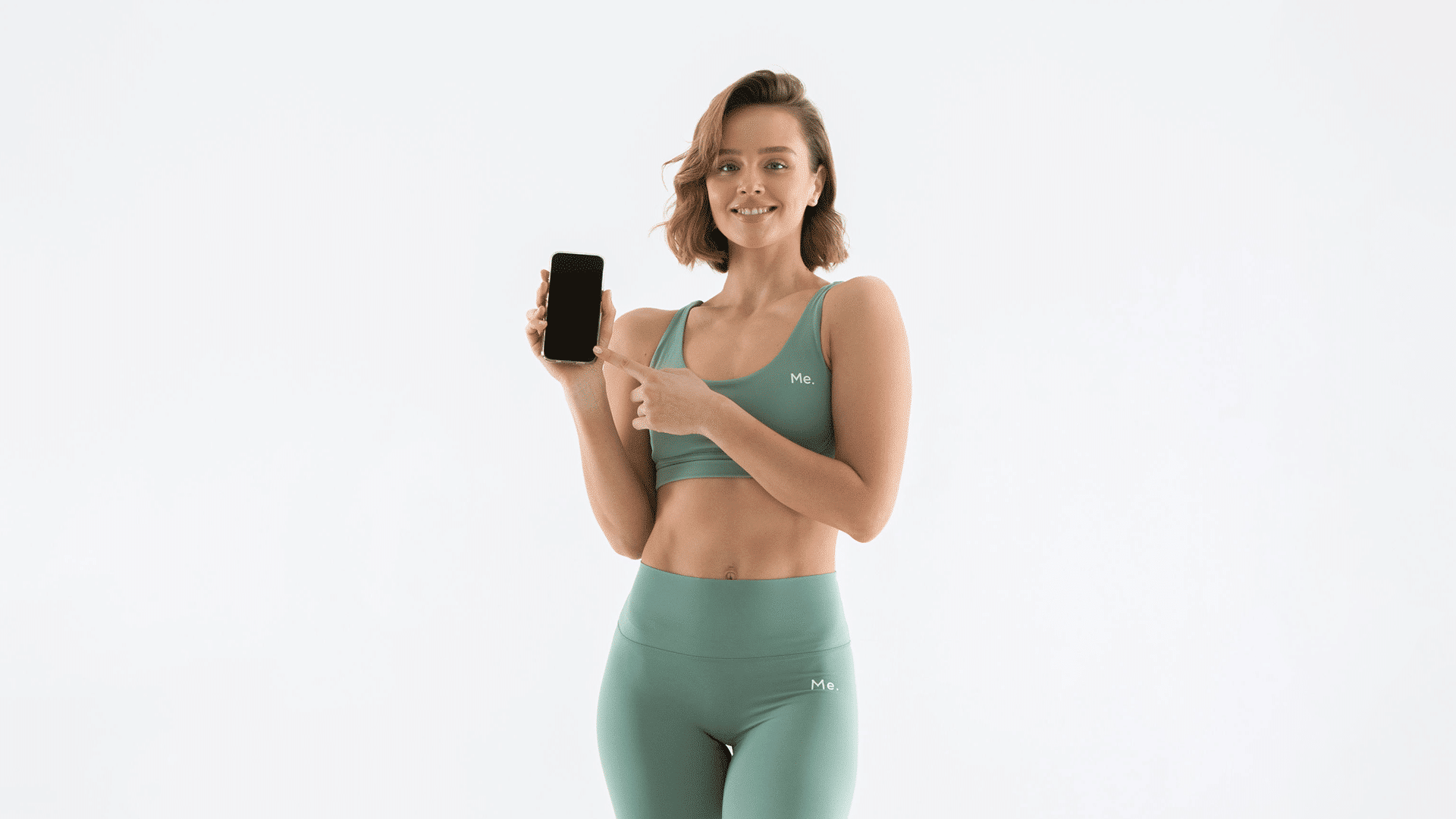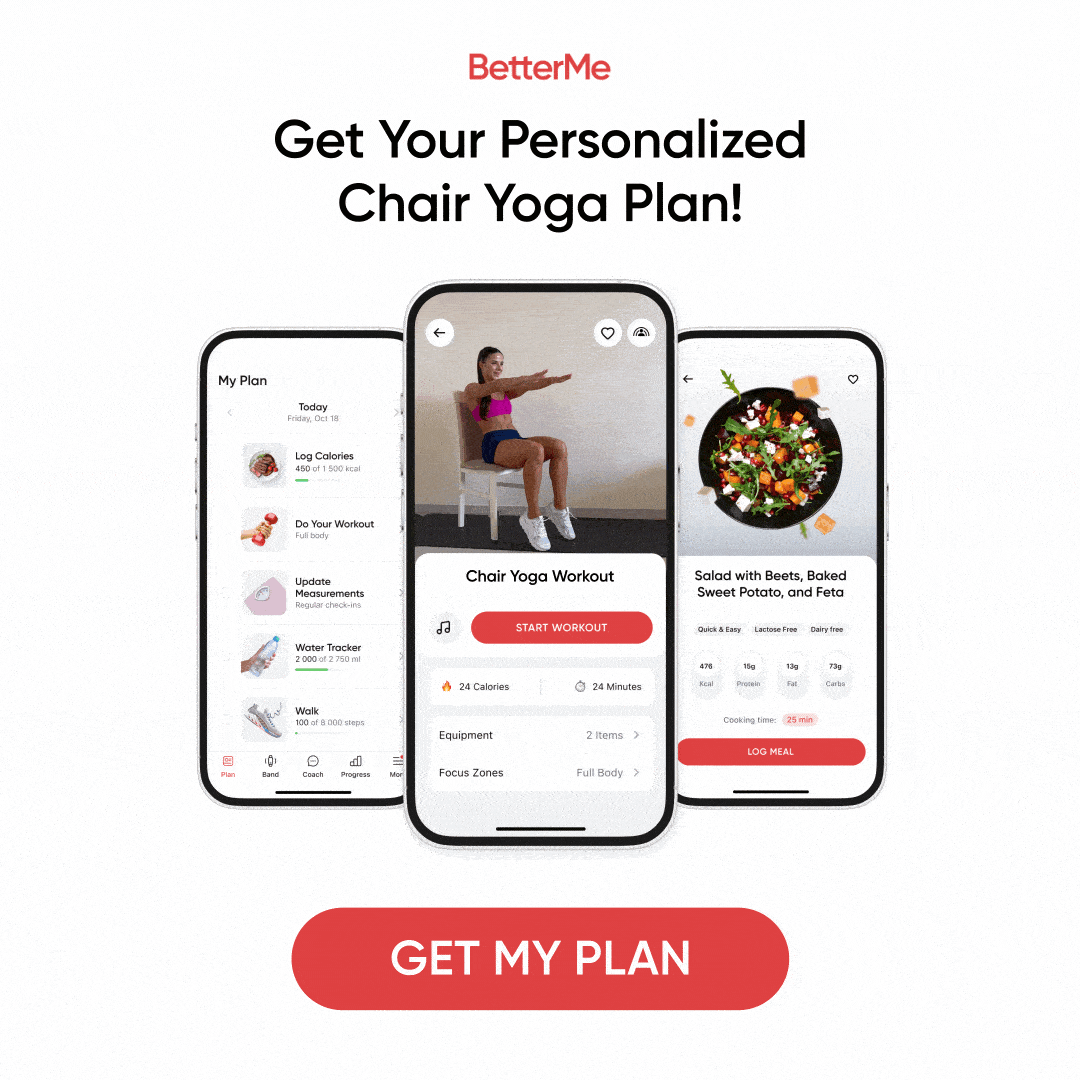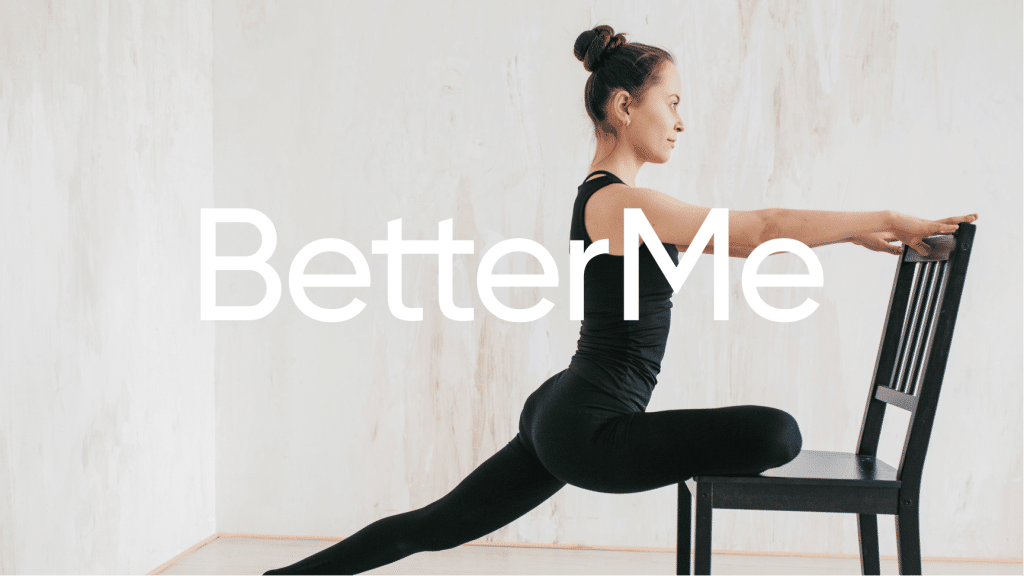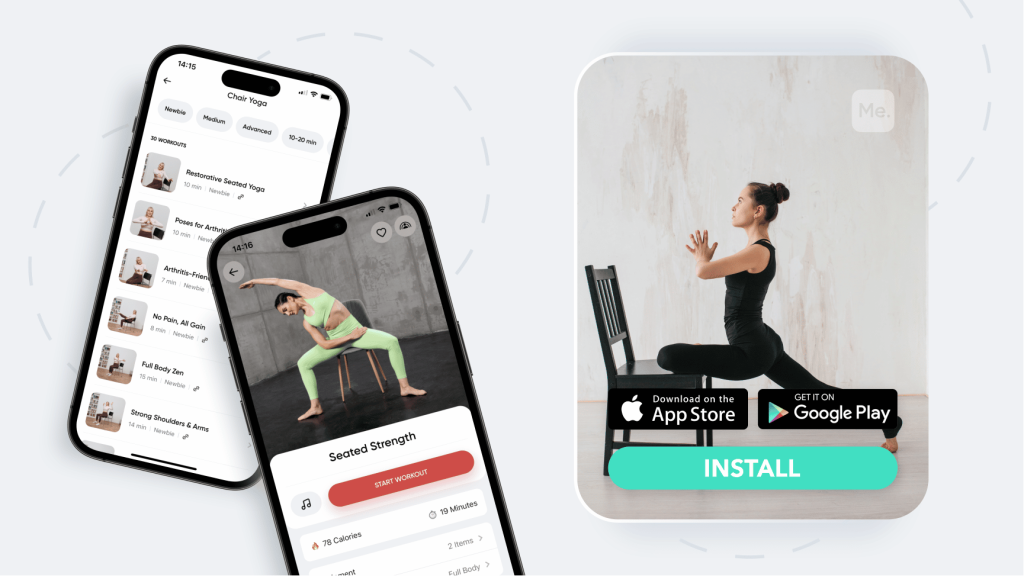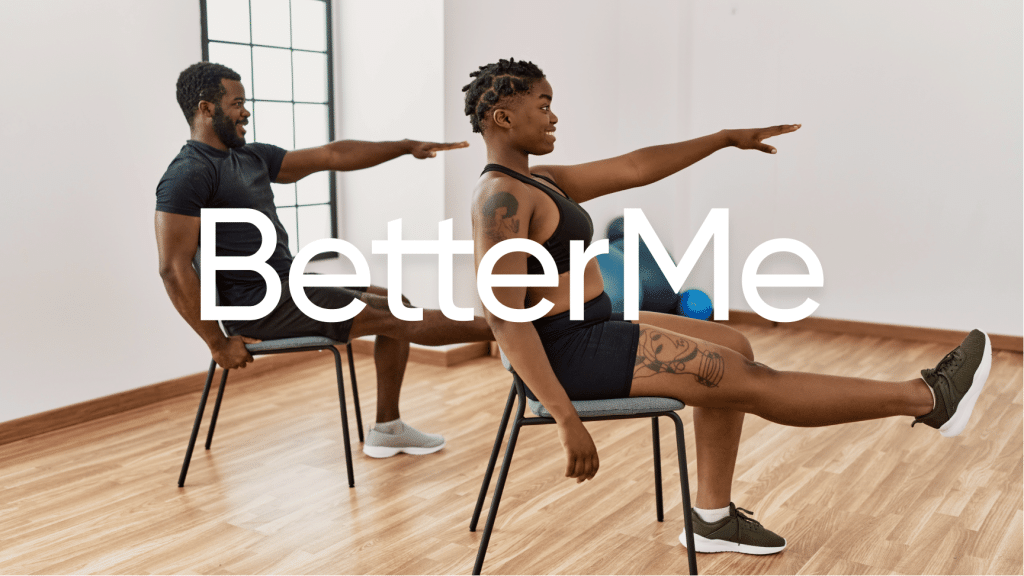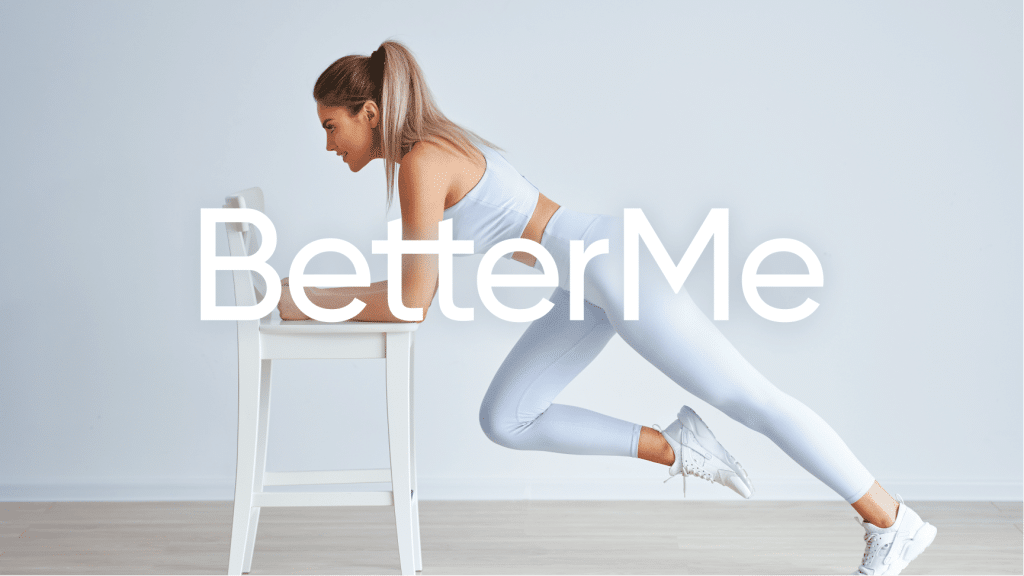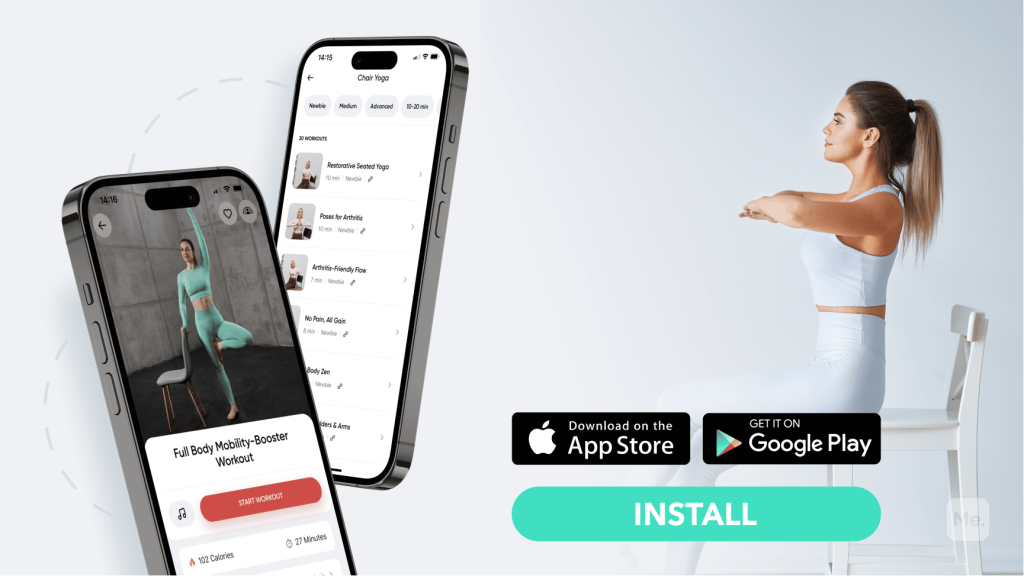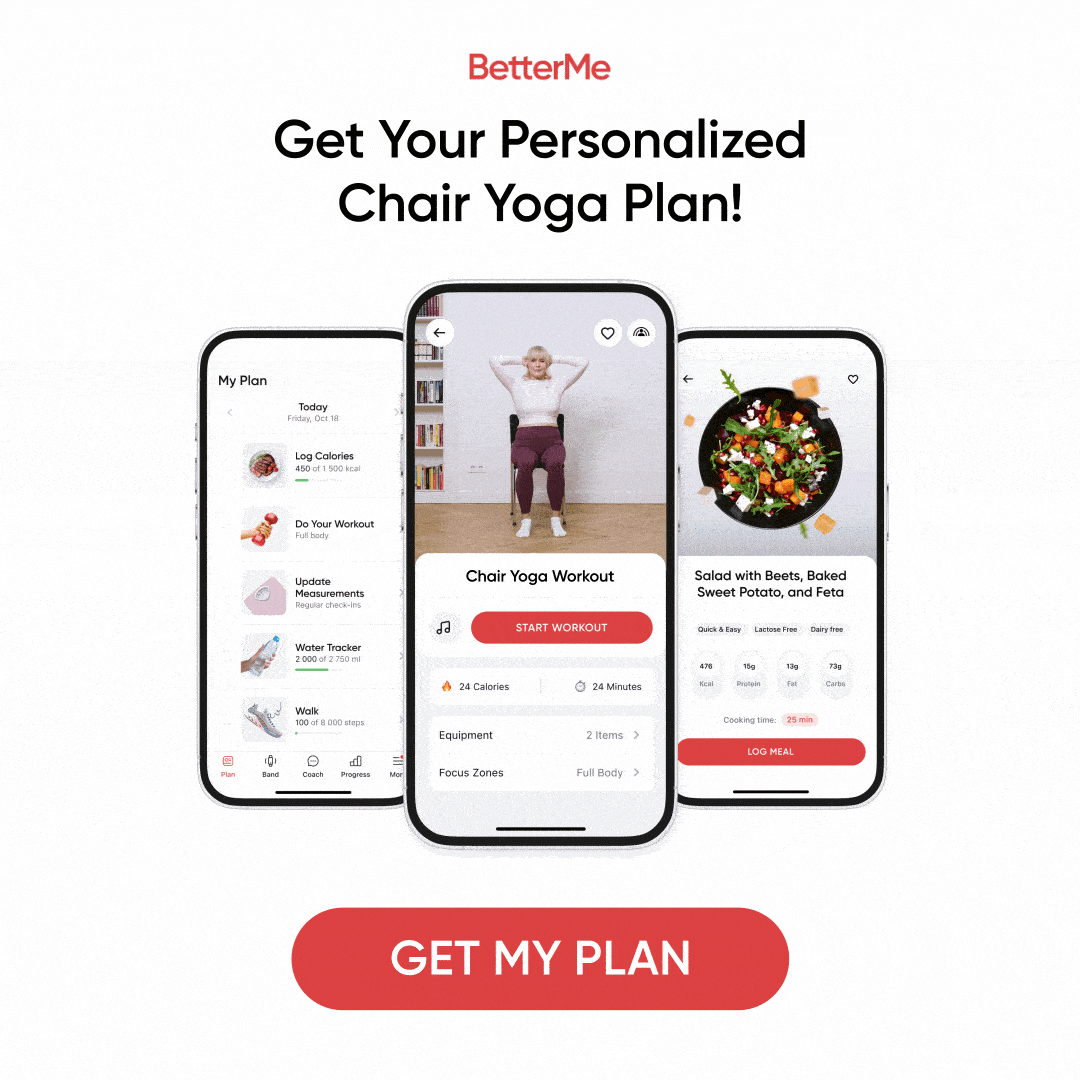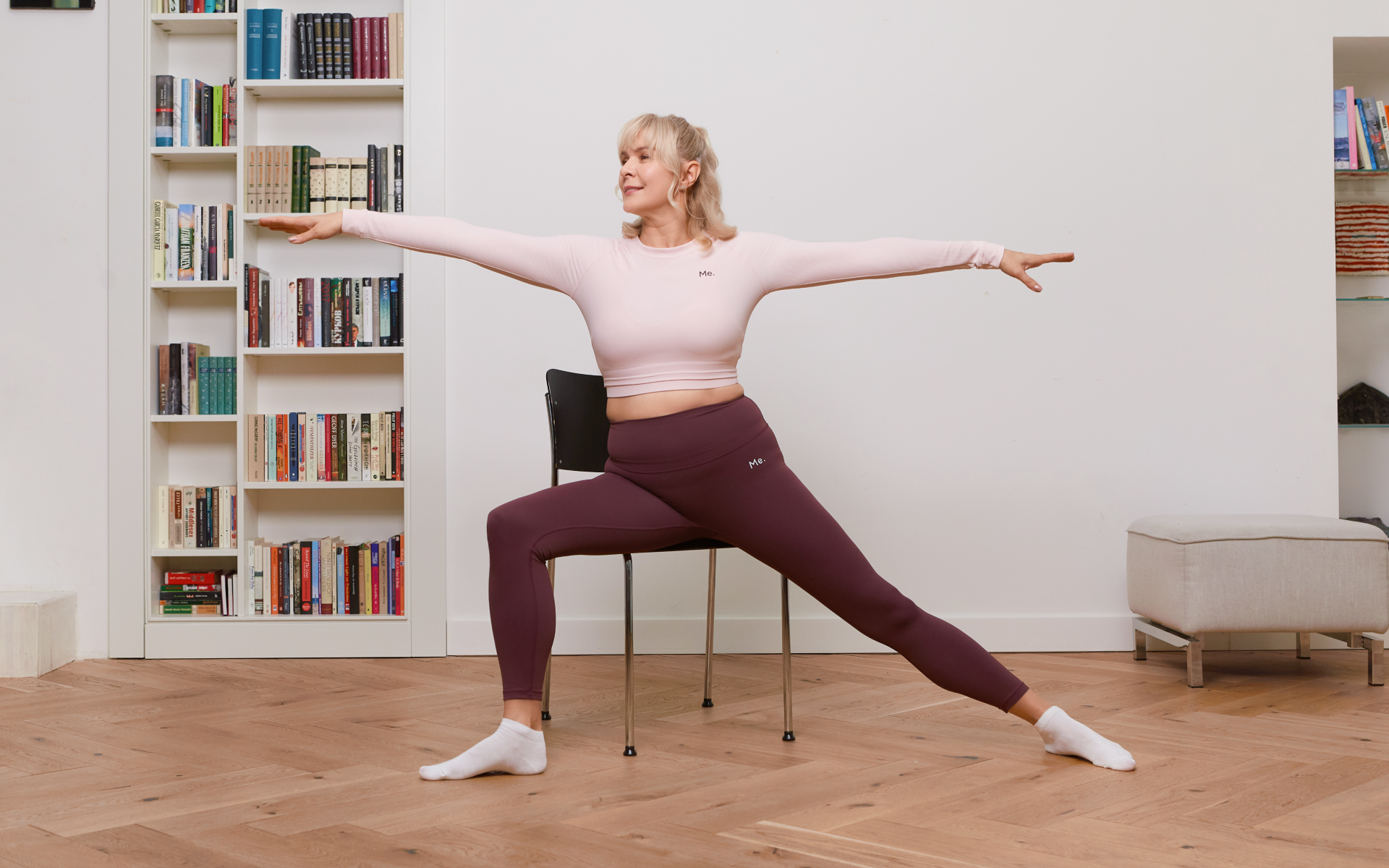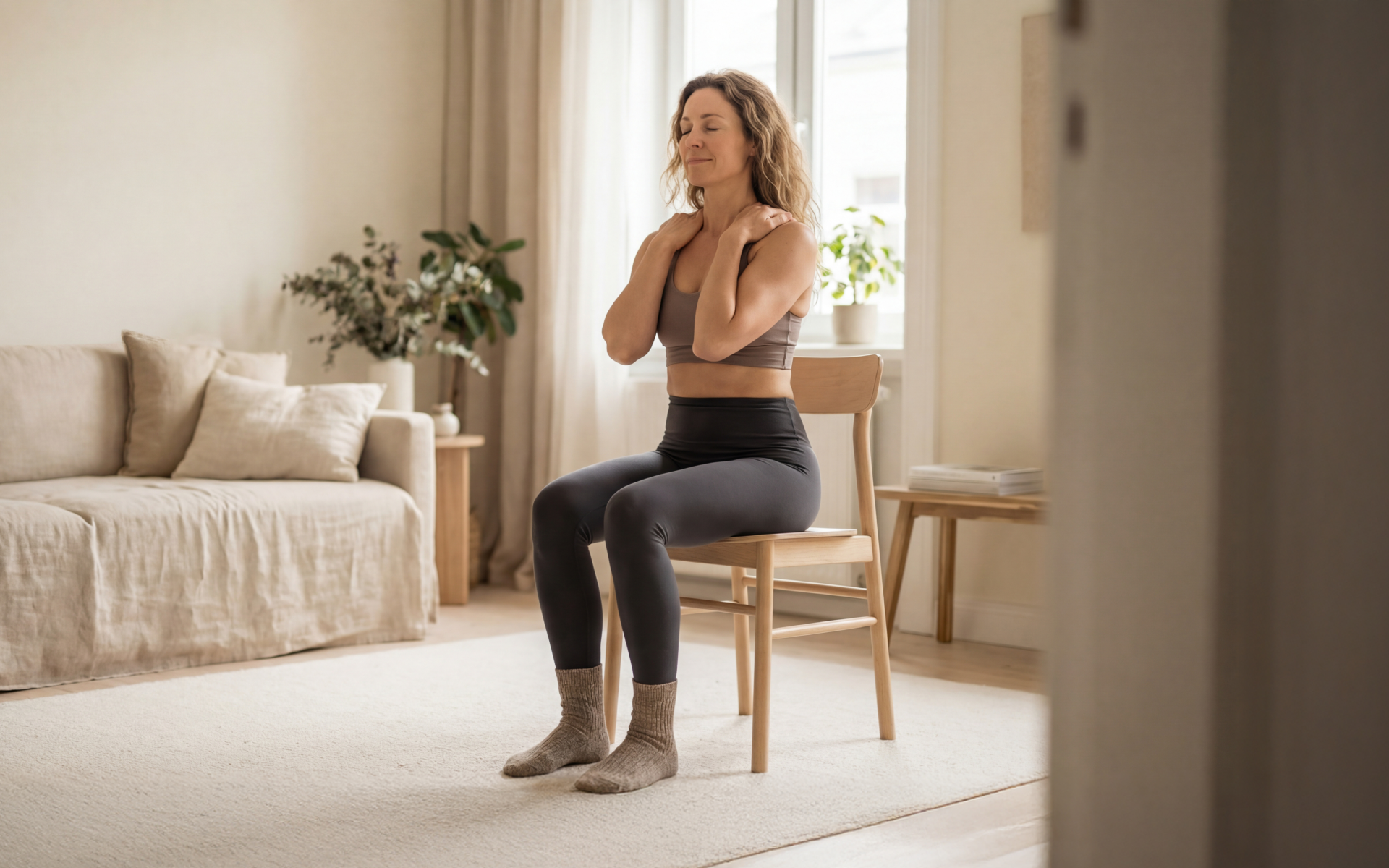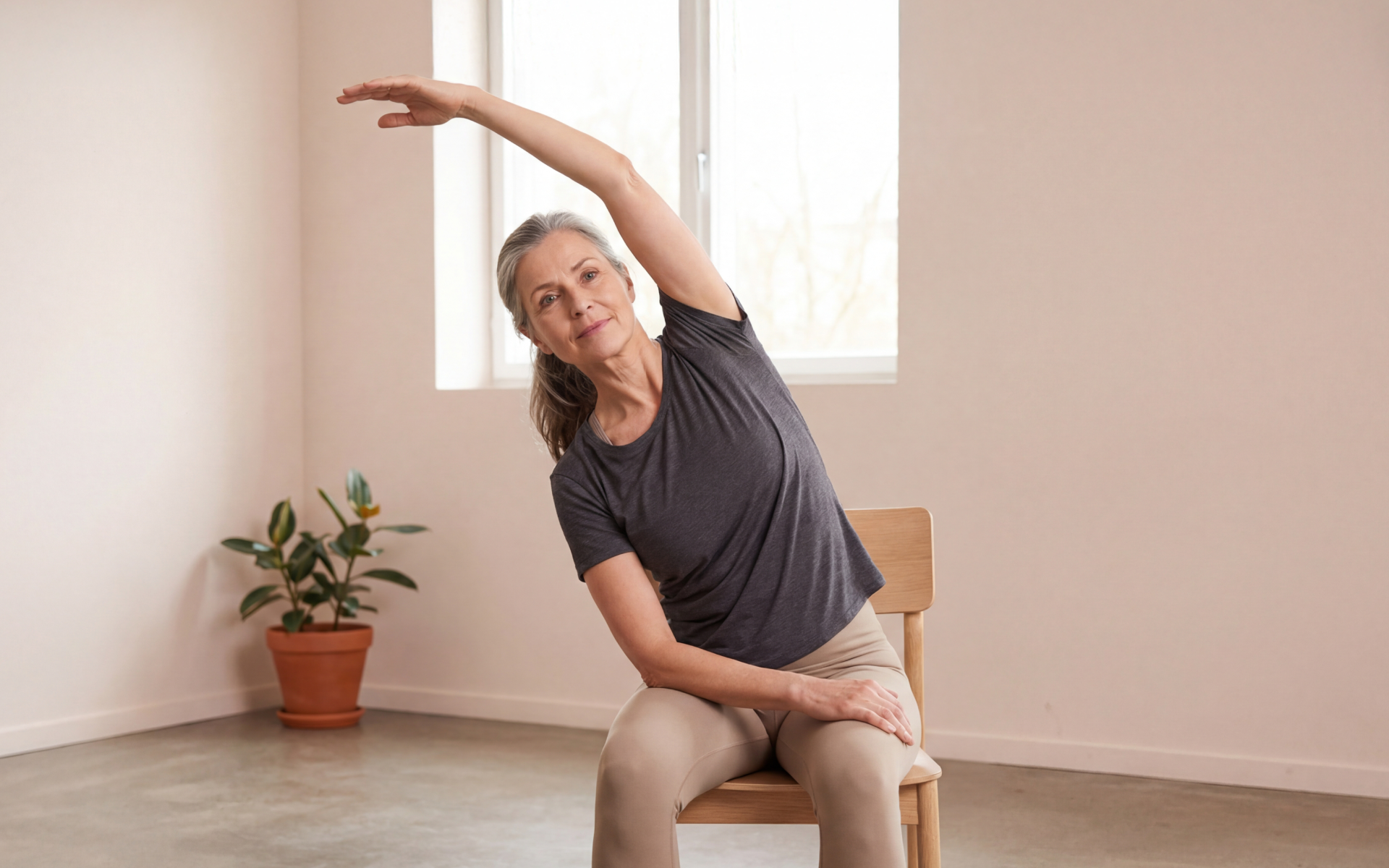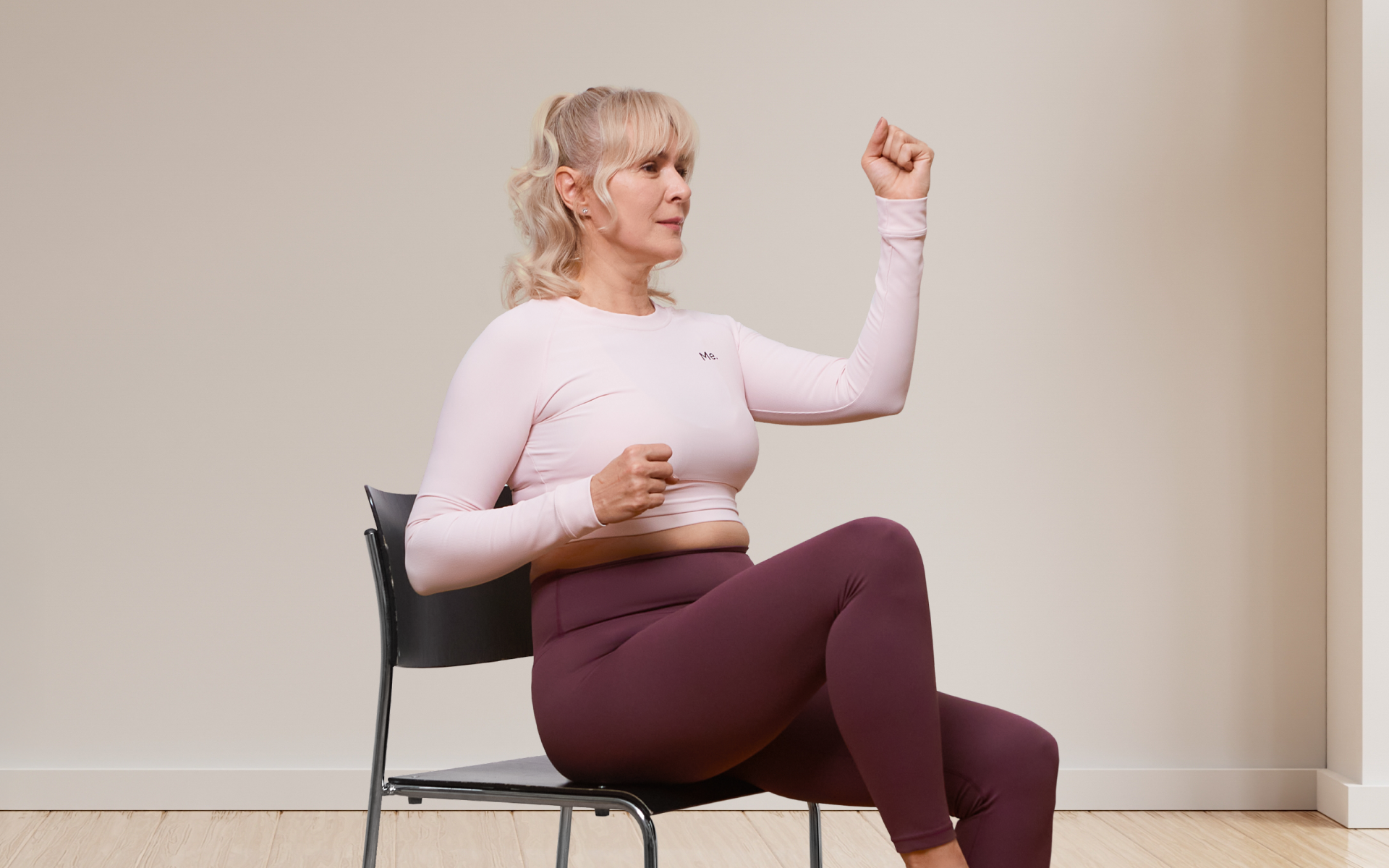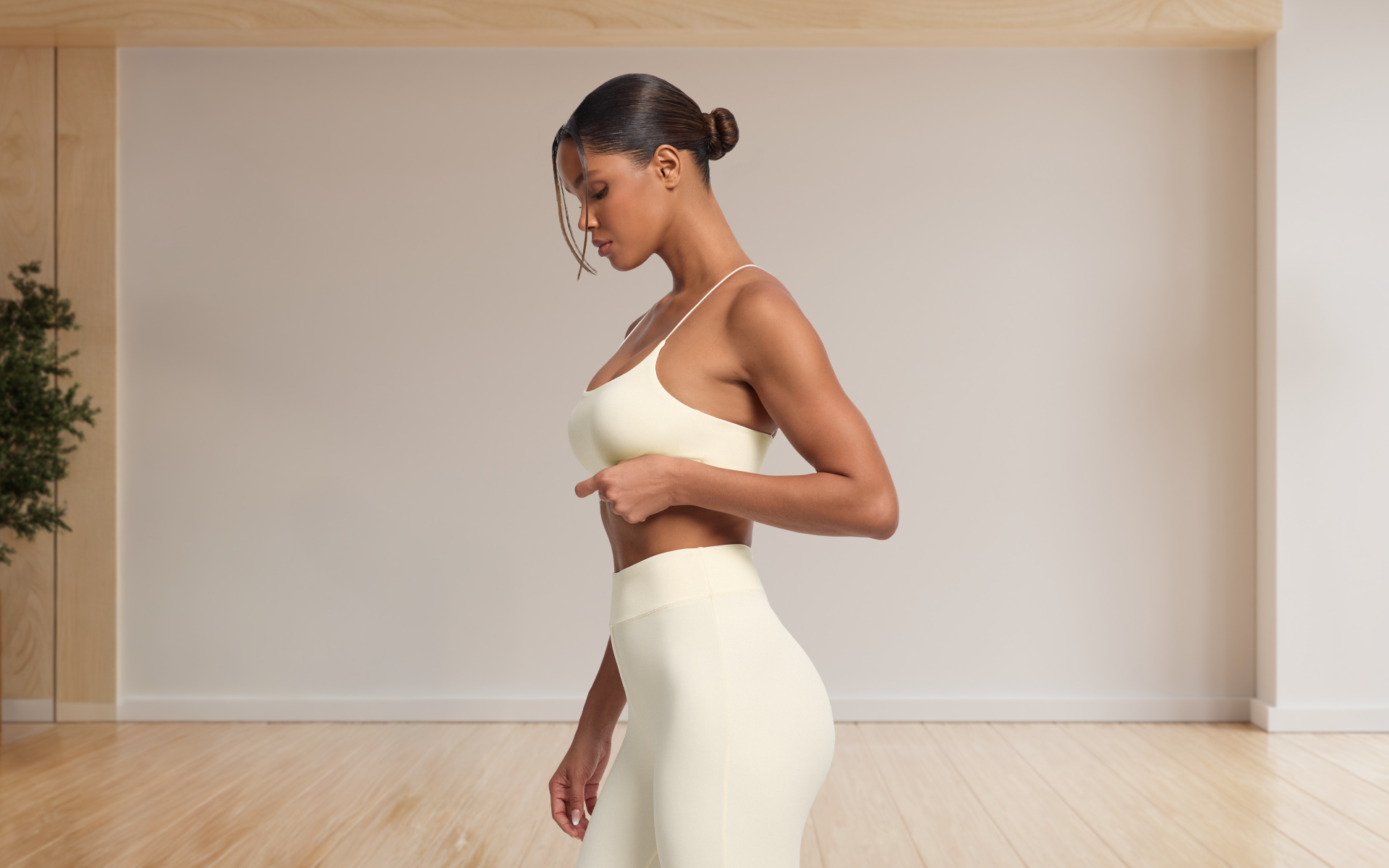You might think that having a perfectly sculpted set of abs is only about looking good, but that’s just the tip of the iceberg. Your abdominal muscles are part of a larger group of core muscles that play a crucial role in various aspects of your daily life, such as maintaining proper posture, providing balance and stability, and even supporting your back during physical activities. In this comprehensive guide, we’ll explore a variety of chair exercises specifically designed to help you build strong and functional abs, even if you’re just starting out. If you’re new to chair exercises, don’t worry – the following beginner-friendly workouts are easy to learn and can be done right in your own home. Let’s get started!
What Are Chair Exercises For Abs?
Chair exercises for abs are a category of low-impact, accessible workouts that target your abdominal and core muscles while utilizing the support and stability of a chair.
These exercises are designed to accommodate individuals who may have limited mobility, space constraints, or simply prefer a more gentle and manageable approach to fitness.
With chair exercises for abs, you can still effectively work on strengthening your core without having to endure the intensity of traditional crunches and Russian twists on the gym floor.
They provide an excellent alternative for those who seek a versatile and convenient workout option without compromising on results.
Chair exercises for abs are suitable for a wide range of individuals, making them an inclusive and adaptable workout option. Some of the people who can benefit from these exercises include:
1. Beginners
Those who are new to fitness or just starting their journey towards a stronger core can find chair exercises to be an excellent starting point, as they offer a more approachable and manageable way to work on abdominal muscles.
2. Seniors
Older adults can benefit from chair exercises as they are low-impact and provide support, reducing the risk of injuries while helping maintain flexibility, balance, and core strength (4).
Read More: 12 Easy Chair Stretches To Relieve Work-From-Home Fatigue
3. Individuals With Limited Mobility
People with physical limitations or disabilities that restrict their movement can still work on their core muscles through chair exercises, as they accommodate various levels of mobility and allow for modifications.
4. Office Workers
For those who spend long hours sitting at a desk, chair exercises for abs at work can be a convenient way to sneak in some core work during breaks, helping improve posture and alleviate discomfort caused by prolonged sitting (1).
5. Busy Individuals
People with hectic schedules can incorporate chair exercises for abs quickly into their daily routine as they require minimal space and equipment, making it easy to fit in a quick workout at home or on-the-go.
6. Injury Recovery
Those recovering from injuries or surgery may find chair exercises helpful during the rehabilitation process, as they allow for a gradual and controlled return to physical activity while minimizing strain on the affected areas.
How Can I Work My Abs While Sitting?
Working your abs while sitting involves engaging your core muscles through a combination of isometric holds, controlled movements, and targeted contractions.
Chair exercises for abs take advantage of your seated position to isolate and activate specific muscle groups within your core, such as the rectus abdominis, obliques, and transverse abdominis.
By focusing on proper form, mindful breathing, and maintaining tension throughout each movement, you can effectively challenge and strengthen your abdominal muscles even while seated.
Do Chair Abs Workout Work?
Yes, chair abs workouts do work when performed consistently and correctly. These exercises can be effective in targeting and strengthening your core muscles, while offering several benefits that make them a valuable addition to any fitness routine. Here are some ways and reasons why chair abs workouts work:
1. Targeted Muscle Engagement
Chair abs exercises isolate specific muscle groups within your core, such as the rectus abdominis, obliques, and transverse abdominis. By focusing on these muscles, you can effectively work on building strength and stability in your abdominal region.
2. Low-Impact
Chair exercises are low-impact, which means they put less stress on your joints and spine compared to high-impact exercises. This makes them suitable for individuals with joint issues, injuries, or those who prefer a gentler workout approach (2).
3. Improved Posture And Balance
Strengthening your core through chair exercises can lead to better posture and improved balance, as your abdominal muscles play a crucial role in supporting your spine and maintaining stability during various activities (3).
4. Adaptability
Chair abs workouts can be easily modified and adapted to suit different fitness levels, abilities, and personal preferences. This makes them an inclusive and accessible option for a wide range of individuals.
Whether you’re looking to simply pep up your fitness routine, jazz up your diet with mouth-watering low-calorie recipes or want to get your act together and significantly drop that number on your scale – BetterMe app has got you covered! Improve your body and revamp your life with us!
5. Convenience
Since chair exercises require minimal equipment and space, they can be conveniently incorporated into your daily routine, whether you’re at home, in the office, or traveling.
6. Injury Prevention And Recovery
A strong core can help prevent injuries by providing support and stability during physical activities (3). Additionally, chair abs workouts can aid in injury recovery by allowing for a gradual return to exercise with reduced strain on affected areas.
What Are 7 Chair Exercises For Abs?
There are a variety of chair exercises that target your abdominal and core muscles. Here are seven beginner-friendly workouts to get you started:
1. Seated Marches
- Type: Isolation exercise
- Target muscles: Lower abs and hip flexors
- Best for: Beginners, seniors, and office workers looking to activate their lower abdominal muscles
Steps to follow:
- Sit tall on the edge of a chair with your feet flat on the floor, hands resting on your thighs.
- Engage your core and slowly lift your right knee towards your chest, keeping your back straight.
- Lower your right foot back to the floor then repeat with your left knee.
- Alternate legs for the desired number of repetitions.
Variations:
- To make it easier, perform the exercise with one leg at a time.
- To make it more challenging, hold a light weight or resistance band around your feet.
Mistakes to avoid: Rounding your back or using momentum instead of engaging your core muscles.
2. Seated Bicycle Crunches
- Type: Compound exercise
- Target muscles: Rectus abdominis and obliques
- Best for: Individuals who want to target both upper and lower abs, as well as obliques
Steps to follow:
- Sit near the edge of the chair, lean back slightly, and place your hands behind your head.
- Lift your right knee and twist your torso to bring your left elbow towards the raised knee.
- Lower your right foot back down then repeat on the opposite side.
- Continue alternating sides for the desired number of repetitions.
Variations:
- To make it easier, perform the exercise without twisting your torso or with hands on your thighs.
- To make it more challenging, add ankle weights or increase the pace of the movement.
Mistakes to avoid: Pulling on your neck or rounding your back during the exercise.
3. Seated Leg Lifts
- Type: Isolation exercise
- Target muscles: Lower abs and hip flexors
- Best for: Strengthening the lower abs and improving hip flexibility
Steps to follow:
- Sit tall with your hands gripping the sides of the chair for support.
- Engage your core and lift both legs straight out in front of you, holding for a few seconds.
- Lower your legs back down then repeat for the desired number of repetitions.
Variations:
- To make it easier, perform the exercise one leg at a time or with bent knees.
- To make it more challenging, add ankle weights or increase the duration of the hold.
Mistakes to avoid: Arching your back or using momentum to lift your legs.
Read More: Unlocking Relaxation: The Magic Of Restorative Chair Yoga
4. Seated Russian Twists
- Type: Compound exercise
- Target muscles: Obliques and rectus abdominis
- Best for: Improving rotational strength and targeting the oblique muscles
Steps to follow:
- Sit on the edge of the chair with your feet flat on the floor and knees bent.
- Hold a lightweight object or clasp your hands together at chest level.
- Engage your core and lean back slightly, keeping your back straight.
- Twist your torso from side to side, tapping the weight or your hands on either side of your hips.
Variations:
- To make it easier, perform the exercise without a weight or with a smaller range of motion.
- To make it more challenging, lift your feet off the ground or use a heavier weight.
Mistakes to avoid: Rounding your back or using momentum to twist your torso.
5. Seated Side Bends
- Type: Isolation exercise
- Target muscles: Obliques
- Best for: Improving lateral stability and targeting the oblique muscles
Steps to follow:
- Sit up straight with your feet flat on the floor, and place your right hand behind your head.
- Engage your core and bend your torso to the right, bringing your elbow towards your hip.
- Return to the starting position then repeat on the other side with your left hand behind your head.
Variations:
- To make it easier, perform the exercise with your hands on your hips.
- To make it more challenging, hold a light weight in your free hand.
Mistakes to avoid: Slouching or bending forward instead of to the side.
6. Seated Scissor Kicks
- Type: Isolation exercise
- Target muscles: Lower abs and hip flexors
- Best for: Strengthening the lower abs and improving hip flexibility
Steps to follow:
- Sit tall on the edge of a chair with your hands gripping the sides for support.
- Engage your core and lean back slightly, lifting both legs off the ground.
- Kick your legs in a scissor-like motion, alternating one over the other.
- Continue for the desired number of repetitions.
Variations:
- To make it easier, perform the exercise with bent knees or while resting your hands on your thighs.
- To make it more challenging, add ankle weights or increase the speed of the movement.
Mistakes to avoid: Rounding your back or using momentum to kick your legs.
If you struggle to even flirt with the idea of giving up your favorite foods or working out till your legs give way – BetterMe app is here to breathe a fresh perspective into the way you view the weight loss process! Check out the app and experience the fun side of fitness and dieting with BetterMe!
7. Seated Plank
- Type: Isometric exercise
- Target muscles: Entire core, including rectus abdominis, obliques, and transverse abdominis
- Best for: Building overall core strength and endurance
Steps to follow:
- Sit tall on the edge of a chair with your feet flat on the floor and your hands resting on your thighs.
- Engage your core, press your hands into your thighs, and lift your hips off the chair, keeping your feet flat on the ground.
- Hold this position for the desired amount of time, maintaining a straight line from your head to your knees.
Variations:
- To make it easier, do the exercise with your hands on the chair for support.
- To make it more challenging, lift one leg off the ground while holding the plank position.
Mistakes to avoid: Letting your hips sag or arching your back during the hold.
Conclusion
Chair exercises for abs offer a practical and effective way to build a strong and functional core, regardless of your fitness level or personal circumstances.
By incorporating these 7 chair exercises into your routine, you can improve your posture, balance, and overall core strength without the need for high-impact workouts or expensive gym equipment.
Give these accessible and versatile exercises a try, and embrace the benefits of a stronger, healthier core.
DISCLAIMER:
This article is intended for general informational purposes only and does not serve to address individual circumstances. It is not a substitute for professional advice or help and should not be relied on for making any kind of decision-making. Any action taken as a direct or indirect result of the information in this article is entirely at your own risk and is your sole responsibility.
BetterMe, its content staff, and its medical advisors accept no responsibility for inaccuracies, errors, misstatements, inconsistencies, or omissions and specifically disclaim any liability, loss or risk, personal, professional or otherwise, which may be incurred as a consequence, directly or indirectly, of the use and/or application of any content.
You should always seek the advice of your physician or other qualified health provider with any questions you may have regarding a medical condition or your specific situation. Never disregard professional medical advice or delay seeking it because of BetterMe content. If you suspect or think you may have a medical emergency, call your doctor.
SOURCES:
- Physical Activity Breaks for the Workplace (2021, cdc.gov)
- The benefits of the low intensity training (1992, nih.gov)
- The real-world benefits of strengthening your core (2012, harvard.edu)
- The Effect of Chair-Based Exercise on Physical Function in Older Adults: A Systematic Review and Meta-Analysis (2021, nih.gov)
